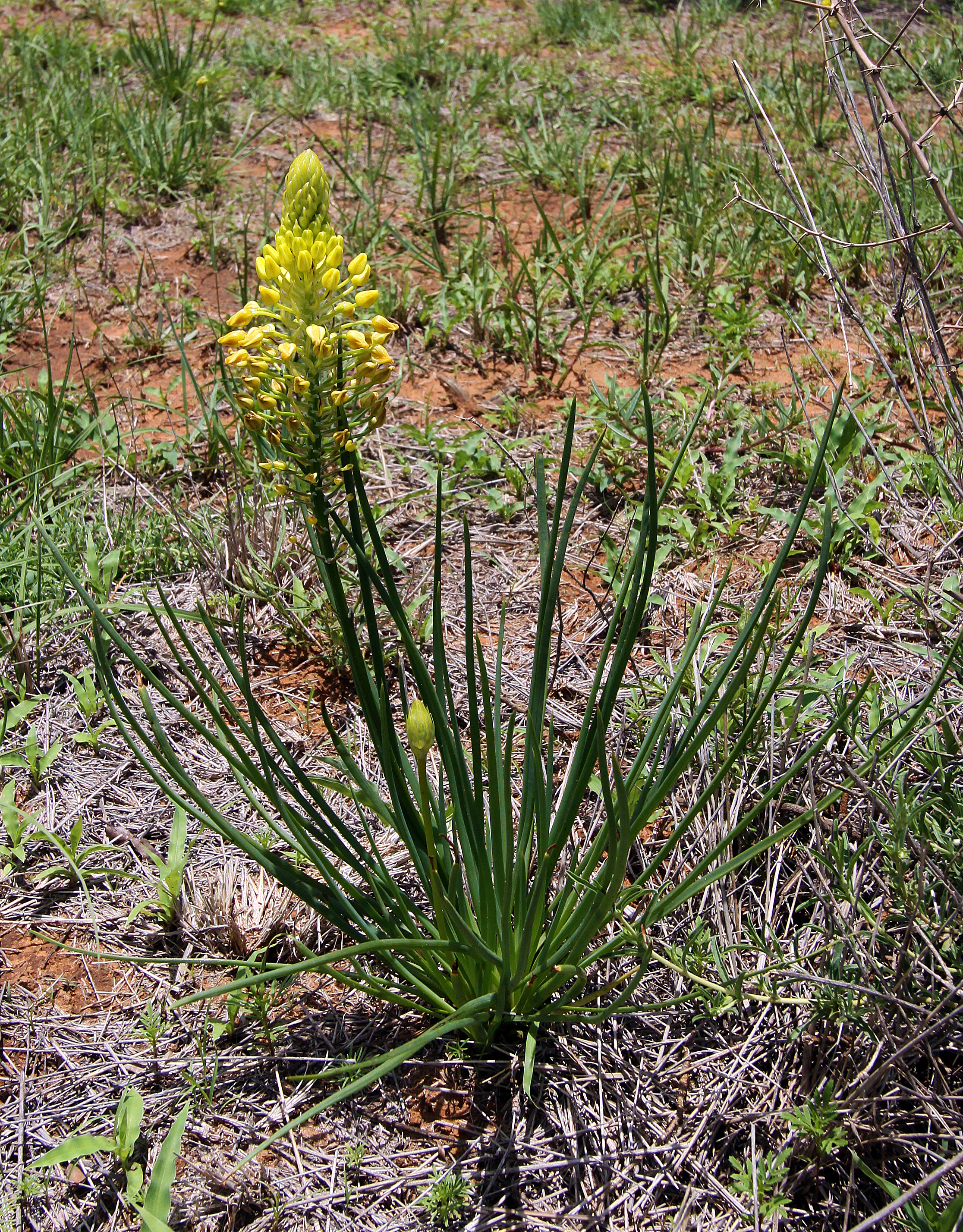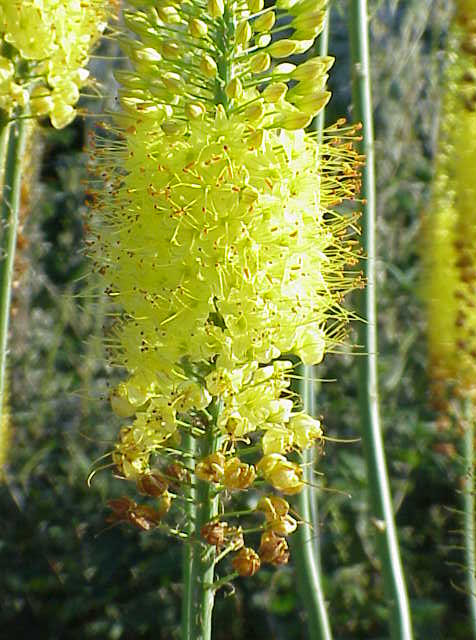|
Bulbine
''Bulbine'' is a genus of plants in the family Asphodelaceae and subfamily Asphodeloideae, named for the bulb-shaped tuber of many species. It was formerly placed in the Liliaceae. It is found chiefly in Southern Africa, with a few species extending into tropical Africa and a few others in Australia and Yemen. ''Bulbine'' is a genus of succulent plants with flowers borne in lax or compound racemes. The flowers are usually yellow, with bearded stamens; some species have white, orange, or pink flowers. Several species are grown in gardens, especially '' B. frutescens''. Species of ''Bulbine'' resemble ''Haworthia'' and ''Aloe'' in appearance, but with soft, fleshy leaves and tuberous roots or a caudex. They are shrubs, weedy perennials, dwarf geophytes (including '' Bulbine lolita'', the smallest of all succulent Monocots ), and soft annuals. Many of the dwarf species have small, dome-shaped tubers. Dormancy Dormancy is a period in an organism's Biological life cycle, life cyc ... [...More Info...] [...Related Items...] OR: [Wikipedia] [Google] [Baidu] |
Bulbine Bulbosa
''Bulbine bulbosa'', commonly known as bulbine lily, native leek, golden lily, or native onion, is a species of flowering plant in the family Asphodelaceae and is endemic to Australia. It is a perennial herb with thick roots, channelled leaves, and yellow flowers with hairy stamen filaments. Description ''Bulbine bulbosa'' is a perennial herb that grows in tufts high with thick, fleshy roots and usually a bulb-like tuber. There are between three and seven leaves, channelled to more or less cylindrical, tapering and hollow, up to long and wide. The flowers are borne in racemes long with up to fifty fragrant flowers on one or two scapes long. Each flower is on a pedicel long with a bract long at the base. The six tepals are yellow, long and wide, and the stamens are long with golden-brown, club-shaped hairs on the filaments, and gold-coloured anthers. Flowering occurs from February to March and the fruit is a more or less spherical to oval capsule long. Taxonomy This ... [...More Info...] [...Related Items...] OR: [Wikipedia] [Google] [Baidu] |
Bulbine Frutescens
''Bulbine frutescens'', the wild kopieva or stalked bulbine, is a species of flowering plant in the genus '' Bulbine'', native to southern Africa (South Africa, Lesotho, Eswatini). Description This variable species grows as a small shrub, with short, low stems that produce roots down towards the ground, and slender, erect, succulent, grey-green leaves. The flowers appear throughout the summer, on a 30 cm erect inflorescence. The flowers can be orange, yellow or white. Like all '' Bulbine'' species, the stamens are distinctively tufted ("bearded"). Growth ''Bulbine frutescens'' is mostly dormant in summer, blooming in the spring, and then again in autumn although somewhat less. It can be propagated easily by stem cuttings. The cuttings can be planted immediately and kept in a shady area. They do not need any special attention or treatment, and build strong roots in a couple of months. Name ''Bulbine'' comes from the Greek word ''bolbine'', a general word for a bulbous pla ... [...More Info...] [...Related Items...] OR: [Wikipedia] [Google] [Baidu] |
Bulbine Lolita
''Bulbine lolita'' is a species of flowering plant in the family Asphodelaceae, native to the Knersvlakte region of the Northern Cape province of South Africa. It is the smallest known monocot succulent, measuring no more than 3/5ths inch (15 mm) wide by 1/4th inch (6 mm) in height. A recent discovery, it was unknown prior to 1999. It is also remarkable for its multicolored leaves. References lolita ''Lolita'' is a 1955 novel written by Russian-American novelist Vladimir Nabokov. The protagonist and narrator is a French literature professor who moves to New England and writes under the pseudonym Humbert Humbert. He details his obsession ... Endemic flora of the Cape Provinces Plants described in 2006 {{Asphodelaceae-stub ... [...More Info...] [...Related Items...] OR: [Wikipedia] [Google] [Baidu] |
Asphodelaceae
Asphodelaceae is a family of flowering plants in the order Asparagales. Such a family has been recognized by most taxonomists, but the circumscription has varied widely. In its current circumscription in the APG IV system, it includes about 40 genera and 900 known species. The type genus is '' Asphodelus''. The family has a wide, but scattered, distribution throughout the tropics and temperate zones; for example, ''Xanthorrhoea'' is endemic to Australia, while the '' Aloes'' are unique to Africa and parts of the Arabian Peninsula. Many of the family's genera are cultivated as ornamentals, with some being highly collectible and sought-after, such as ''Haworthia'' and '' Gasteria'', as well as their intergeneric hybrids with ''Aloe'' ('' x Gasteraloe'', x ''Gastorthia'', x ''Haworthaloe'', etc.), while a few are grown commercially for cut flowers. Two species of ''Aloe'', '' A. vera'' and '' A. maculata'', are grown for their leaf sap, which contains digestive enzymes, an ... [...More Info...] [...Related Items...] OR: [Wikipedia] [Google] [Baidu] |
Asphodeloideae
Asphodeloideae is a subfamily of the monocot family Asphodelaceae in the order Asparagales. It has previously been treated as a separate family, Asphodelaceae ''sensu stricto''. The family Asphodelaceae has now been proposed to be a nomen conservandum, and the proposal has been recommended for ratification in 2017. In that case, Asphodelaceae will have priority over Xanthorrhoeaceae. This is reflected in the APG IV family lists. The subfamily name is derived from the generic name of the type genus, ''Asphodelus''. Members of this group can be found growing native in coastal Southern Africa, Central and Western Europe, the Mediterranean basin, Central Asia and Australia; one genus, '' Bulbinella'', can additionally be found growing in New Zealand. The greatest diversity occurs in South Africa. Several genera, notably ''Aloe'', ''Asphodelus'', ''Gasteria'', ''Haworthia'' and '' Kniphofia'' are perhaps the best known of the family due to their use among plant collectors, botanis ... [...More Info...] [...Related Items...] OR: [Wikipedia] [Google] [Baidu] |
Succulent Plant
In botany, succulent plants, also known as succulents, are plants with parts that are thickened, fleshy, and engorged, usually to retain water in arid climates or soil conditions. The word ''succulent'' comes from the Latin word ''sucus'', meaning "juice" or "sap". Succulents may store water in various structures, such as leaf, leaves and Plant stem, stems. The water content of some succulent organs can get up to 90–95%, such as ''Glottiphyllum semicyllindricum'' and ''Mesembryanthemum barkleyii''. Some definitions also include roots, thus geophytes that survive unfavorable periods by dying back to underground storage organs (caudex) may be regarded as succulents. The habitats of these water-preserving plants are often in areas with high temperatures and low rainfall, such as deserts, but succulents may be found even in Alpine climate, alpine ecosystems growing in rocky or sandy soil. Succulents are characterized by their ability to thrive on limited water sources, such as mist ... [...More Info...] [...Related Items...] OR: [Wikipedia] [Google] [Baidu] |
Caudex
A caudex (: caudices) of a plant is a stem, but the term is also used to mean a rootstock and particularly a basal stem structure from which new growth arises.pages 456 and 695 In the strict sense of the term, meaning a stem, "caudex" is most often used with plants that have a different stem morphology from the typical angiosperm dicotyledon stem: examples of this include palms, ferns, and cycads. The largest of all caudices is that of the ombu (''Phytolacca dioecea'') of the Pampas of South America which can be fifty feet (fifteen meters) thick. The related term caudiciform, literally meaning stem-like, is sometimes used to mean pachycaul, thick-stemmed. Caudices should not be confused with lignotubers which can also be very large. Etymology The term is from the Latin Latin ( or ) is a classical language belonging to the Italic languages, Italic branch of the Indo-European languages. Latin was originally spoken by the Latins (Italic tribe), Latins in Latium (n ... [...More Info...] [...Related Items...] OR: [Wikipedia] [Google] [Baidu] |
International Plant Name Index
The International Plant Names Index (IPNI) describes itself as "a database of the names and associated basic bibliographical details of seed plants, ferns and lycophytes." Coverage of plant names is best at the rank of species and genus. It includes basic bibliographical details associated with the names. Its goals include eliminating the need for repeated reference to primary sources for basic bibliographic information about plant names. The IPNI also maintains a list of standardized author abbreviations. These were initially based on Brummitt & Powell (1992), but new names and abbreviations are continually added. Description IPNI is the product of a collaboration between The Royal Botanic Gardens, Kew (Index Kewensis), The Harvard University Herbaria (Gray Herbarium Index), and the Australian National Herbarium ( APNI). The IPNI database is a collection of the names registered by the three cooperating institutions and they work towards standardizing the information. The stand ... [...More Info...] [...Related Items...] OR: [Wikipedia] [Google] [Baidu] |
Plant
Plants are the eukaryotes that form the Kingdom (biology), kingdom Plantae; they are predominantly Photosynthesis, photosynthetic. This means that they obtain their energy from sunlight, using chloroplasts derived from endosymbiosis with cyanobacteria to produce sugars from carbon dioxide and water, using the green pigment chlorophyll. Exceptions are parasitic plants that have lost the genes for chlorophyll and photosynthesis, and obtain their energy from other plants or fungi. Most plants are multicellular organism, multicellular, except for some green algae. Historically, as in Aristotle's biology, the plant kingdom encompassed all living things that were not animals, and included algae and fungi. Definitions have narrowed since then; current definitions exclude fungi and some of the algae. By the definition used in this article, plants form the clade Viridiplantae (green plants), which consists of the green algae and the embryophytes or land plants (hornworts, liverworts ... [...More Info...] [...Related Items...] OR: [Wikipedia] [Google] [Baidu] |


